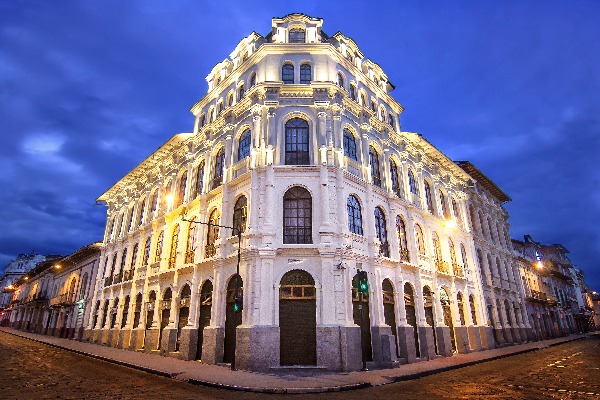Coastal Ecuador expats should educate themselves on the ‘Ring of Fire’ risks
By Larry Edenfield
A friend from California Skyped me Wednesday night after he heard about the 6.7 and 6.9 earthquake aftershocks.
 “Folks down there must be pretty used to these things by now,” he said, adding that he had lived through the 1994 Northridge earthquake and understood what the “big one” felt like. “The ones down there aren’t that big, are they?” he asked.
“Folks down there must be pretty used to these things by now,” he said, adding that he had lived through the 1994 Northridge earthquake and understood what the “big one” felt like. “The ones down there aren’t that big, are they?” he asked.
No, I explained, we are not used to quakes like April 16 or even this week’s big aftershocks. How can someone get used to seeing family members killed and injured and their homes destroyed?
And no, the earthquakes in Ecuador are not smaller than the Northride quake. Based on early analytics, the April 16 earthquake was about 15 times more powerful than Northridge, and about 12 times more powerful than the 1989 Loma Linda quake in the California Bay Area. In fact, even Wednesday’s aftershocks were stronger than the California quakes.

A street in Manta April 18. Credit: El Universo
For comparison purposes, I told him, had the April 16 earthquake occurred in the U.S., it would have been the strongest earthquake in more than a century. As a matter of fact, its intensity was a little stronger than the famous 1906 San Francisco earthquake.
The conversation with my friend made me think that, even after recent events, many expats do not have a basic understanding of earthquakes and the enormous risks they pose.
Last week, I read a social media post suggesting that expats living on the north coast of Ecuador move south. “We are out of the risk area in Salinas,” said one. “You can live here and not have to worry about what happened to you up there.” A friend mentioned seeing real estate ads that said the same thing. Such comments are ignorant, of course, but they are also dangerous. They discourage people from doing their homework and learning about the place they choose to live.
For the record, strong (7.0 or higher magnitude) coastal earthquakes occur about every 30 years from Manta to the Colombian border, and about every 50 years from Manta to the Peruvian border. Since the entire coast fronts the continental plate subduction zone — the “Pacific Ring of Fire”, if you will — the potential for powerful earthquakes exists on any part of the coast.
There is nothing wrong with living in an area subject to big earthquakes. Many of these areas are beautiful and offer a great quality of life. And major earthquakes, like the April 16 event, are very infrequent and it’s very possible to live for years in an earthquake-prone area without feeling anything more than a little “rocker” or “roller”. Ecuador’s coast is not unlike California’s, which, by the way, is overdue for a “big one” — much, much bigger than Northridge. I should add, I do not believe that Ecuador’s coast is any more susceptible today to another big earthquake than the west coast of the U.S. In fact, I would say the U.S. may be in greater danger.
My advice to expats who live on or near Ecuador’s coast is to educate themselves about the science of earthquakes and to understand the risks. There are many wonderful on-line resources from university geology departments, the United States Geological Survey (USGA), Ecuador’s Geophysical Institute, and others, that will provide a thorough overview.
On a practical level, these resources can help you develop emergency plans for earthquakes and make decisions such as whether to buy earthquake insurance.
I do not mean, in this article, to understate earthquake dangers in other regions of Ecuador. The sierra, from the Riobamba and Ambato to the Colombian border, has suffered a number of strong and devastating earthquakes in recorded history. I concentrate on the coast simply because the risks there, to both life and property, are so much greater than in other parts of the country. All expats should conduct their due diligence to understand the risks in the areas they live.
To borrow a phrase from U.S Homeland Security, “Don’t be scared, be prepared.”
(To find about earthquake risk in all parts of Ecuador, click here.)
________________
Larry Edenfield is a retired geologist and an Ecuador expat. He was on the faculty of three universities and worked for the United States Geological Survey (USGA).





















